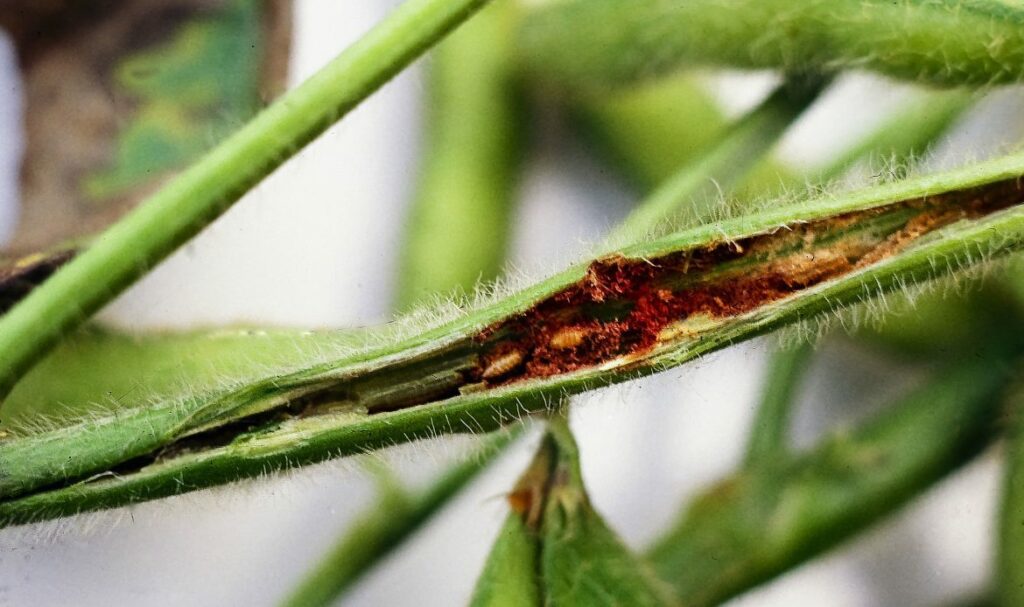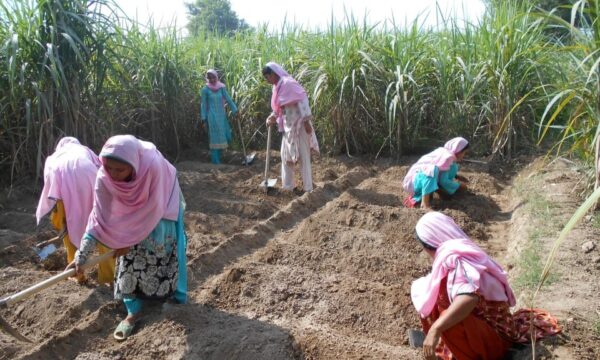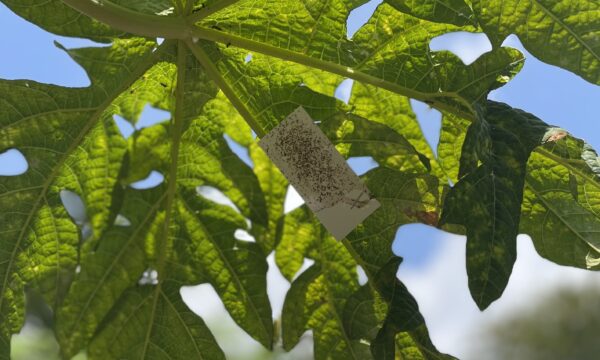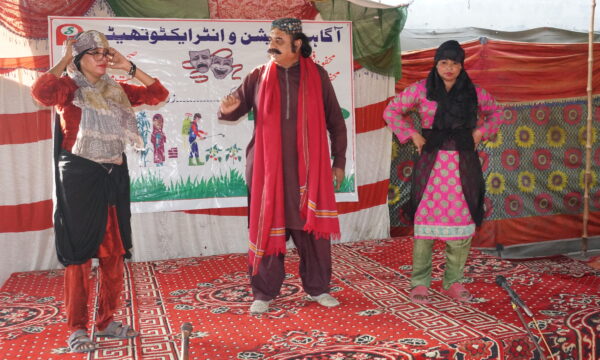This article was originally published on the CABI BioProtection Portal blog. Visit the original blog post here.
Bean fly is a destructive pest of most food legumes, particularly common bean, cowpea, mungbean, blackgram, lima bean and soybean. Symptoms include yellow areas on leaf surfaces, leaf drop, lined marks on leaves and swollen and split stems.

Find out more about how bean fly including how to recognize it, prevent it from becoming a pest, and manage it effectively once it has become a pest.
How can you identify bean fly?
Known commonly as bean fly or bean stem maggot, this insect’s scientific name is Ophiomyia spp. including O. phaseoli, O. spencerella and O. centrosematis.
Bean fly is a small shiny, metallic bluish-black fly, about 2mm in length with clear wings. The larvae are yellow-white in colour and 3mm in length. Pupae are barrel shaped and 2-3mm long. They are initially yellow with dark ends but become dark brown (O. phaseoli) or shiny black (O. spencerella) or red-orange (O. centrosematis).
Which plants does bean fly attack?
The larvae of this small, bluish-black fly attack the stems and leaves of leguminous plants, including Common bean (Phaseolus vulgaris).
O. phaseoli is the most destructive of the group, attacking a wide range of legumes including common bean (Phaseolus vulgaris), soybean (Glycine max) and cowpea (Vigna unguiculate). O. spencerella also attacks the common bean (P. vulgaris) as well as rice bean (Vigna umbellate), Lima bean (Phaseolus lunataus) and other Fabaceae. Similarly O centrosematis has a wide host range including common bean (P. vulgaris), butterfly pea (Centrosema pubescens) and cowpea (V. unguiculata).

What damage does bean fly do?
Initial damage shows on the leaf surface with small pale yellow areas due to adult feeding and ovipositioning (egg-laying). Heavy infestation may lead to leaf drop.
The emergence of the larvae leads to the development of mines (lined marks) on the leaf, as the larvae feed. The main damage is caused by the larvae feeding in the stem as the larvae move down to the lower stem. This may cause swelling and splitting of the stem. In severe attacks the plant can lodge (collapse), wilt and die. If the plant survives, it will have reduced growth and yield. It may produce adventitious roots (roots that form from non-root tissue) to compensate for the damage. Yield loss can be up to 100%.
What is the bean fly’s life-cycle?
The life-cycle consists of egg, larva, pupal and adult stages.
O. phaseoli lays its eggs on the upper or lower leaf surface, often near the midrib close to the leaf petiole (stalk). It lays an average of 100 eggs in its life. These normally incubate for 2-4 days. O. spencerella and O. centrosematis lay their eggs in the hypocotyl (the stem of a germinating seedling) and rarely into the leaves.
Larvae create feeding tunnels and just beneath the epidermis of the leaf and/or stem. The larval stage (three instars) can last from 8-10 days depending on the temperature (up to 11 days for O. centrosematis).
Pupae are formed in the stem feeding tunnels and the period of pupation can vary depending on conditions from 7-20 days. Adults emerge and mating begins within 2-3 days.

How do you monitor bean fly?
Growers will need to monitor seedlings twice weekly, inspecting the stems and leaves for the following:
- Pale oviposition marks on the leaves
- Larval tunnelling of leaves, petioles and stems
- Swelling and cracking of the stem, particularly at the base
- Presence of pupae in the stems
- Presence of adult flies
You will need to apply direct control measures when 5-10% of the plant population has been infested
How do you manage bean fly?
You can manage bean fly through prevention and direct control. Non-chemical methods include:
- Planting early
- Mulching
- Applying fertilizer
- Rotating crop with non-host crops
- Intercropping (with maize)
- Avoiding planting near other leguminous host crops
- Removing weeds and volunteer plants
- Removing and destroying crop residues and all plant parts with symptoms of damage by bean flies
- Earthing/building (ridging) up the soil around the plants to cover the roots at 2-3 weeks after emergence
- Using resistant varieties
- Using sticky traps to catch the adult flies
Direct biological control options are also available. For more information, find your country on www.bioprotectionportal.com
Direct control may also include conventional chemicals (systemic). Check local pesticide lists for availability.
More information on the bean fly, its distribution, life-cycle and management can be found on the Plantwise Knowledge Bank, Infonet biovision, Plantix, Business Queensland and in a recent review by Nkhata et al. (2018)

Related News & Blogs
“Use of any pesticide comes with some risk, but this risk can be reduced”
Pesticides are a widely used pest management option. However, if applied incorrectly, they can pose serious risks to human health, ecosystems, and food safety. From farm workers and consumers to pollinators and waterways, the impacts of unsafe pesticid…
30 June 2025




